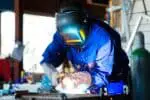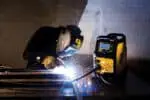Back in the days, working as an Engineer my friends and I often came up with interesting experiments to make the ordinary days ‘not ordinary’. We used to do little innovations and tests in welding to see what the result would be.
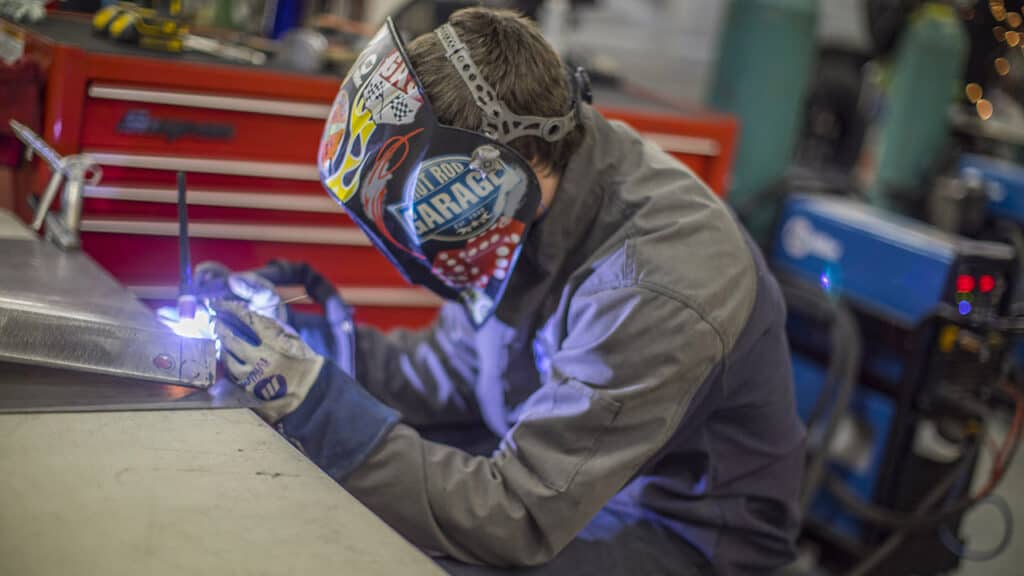 And as a part of these experiments, we tried TIG welding numerous times. And one of the tests that we have done is TIG welding with Argon and its combinations. OH! We got our results alright…And some of them were pretty bad.
And as a part of these experiments, we tried TIG welding numerous times. And one of the tests that we have done is TIG welding with Argon and its combinations. OH! We got our results alright…And some of them were pretty bad.
I am going to tell you today something that I have learned from this and not much discussed anywhere – TIG welding mild steel with pure Argon.
Isn’t Argon too hot to be used purely for welding mild steel in TIG? Is it possible?
Well, TIG welding mild steel with pure Argon is possible without any problem. It is the most preferred gas to weld mild steel in TIG. Mild steel is however often done with MIG due to the time taking and cumbersome process that TIG is. Moreover, to TIG weld mild steel, the welder should be aware of the apt settings for the procedure.
Let’s see more about this. Shall we?
Why pure Argon is necessary to TIG weld mild steel?
TIG weld prefers Argon for almost all its weld. This is because Argon is an inert gas and it does not react with other elements.
Whereas other gases used in welding like oxygen, hydrogen, nitrogen, etc can easily mingle with other elements and create a problem for you. They can oxidize the metal that is involved in the process and create rust on them or they can cause imperfect welding with spatter resulting in a not a very good result.
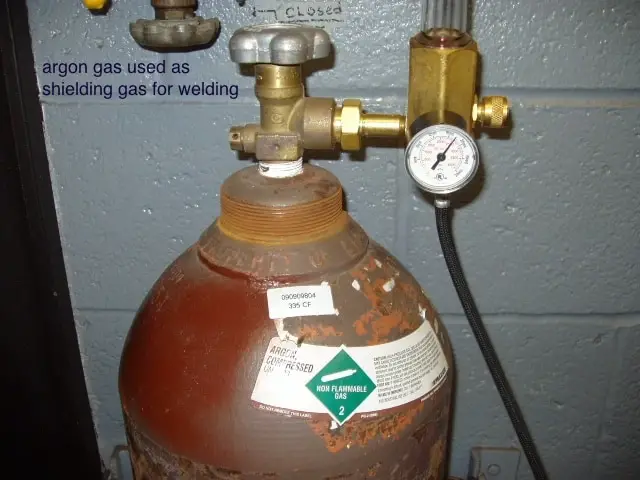
Pure Argon is the perfect choice for TIG as the electrode involved in TIG welding is Tungsten and it can easily get oxidized if it gets in touch with an active gas. And Argon is, therefore, the best choice among gases for TIG weld.
Mild steel contains a very low level of carbon. It ranges from 0.05% and 0.25% in weight. Because of its low carbon content, it is suitable for most welding applications due to its weldability and easy-to-fold nature. They have a low tensile and yield strength. They can convert into any shape. Hence mild steel is used in most welding works.
The question of whether pure Argon can be used for mild steel can only arise if you think that the heat created by Argon will be too high for mild steel. Well, this is a completely baseless assumption that holds no substance.
The amount of heat that pure Argon can transfer to the electrode is completely fine with mild steel. Because of the tungsten rods no matter what metal you use, for TIG welding Argon gas ought to be used. And unless there is a requirement of special additions using pure Argon is the best way to go.
See also: Why Argon gas is Used in TIG welding
Can I use Argon mix to TIG weld mild steel?
The direct answer would be a NO. Due to the risk of oxidation, other gases are not mixed with Argon while working with mild steel. Despite the risk, Argon mix is used in TIG weld at times to get certain very specific aims.
This is when Argon is mixed with nitrogen, helium, oxygen, or hydrogen. This is done to increase the arc heat or to make the weld pool hotter than when only Argon is used. It helps in much better penetration. But for mild steel, this is never needed due to its flexibility and weldability.
As we have mentioned before mild steel never gives you a difficult time and you can easily work on it and change it as you want. This means that heat and arc penetration strength created by pure Argon is the most ideal choice for welding mild steel.
Using an Argon mix can only harm your weld as the heat will be more than what is required for this particular low carbon content steel. Too much heat can give you trouble in the form of less arc stability and more spatter. This will result in a bad weld.
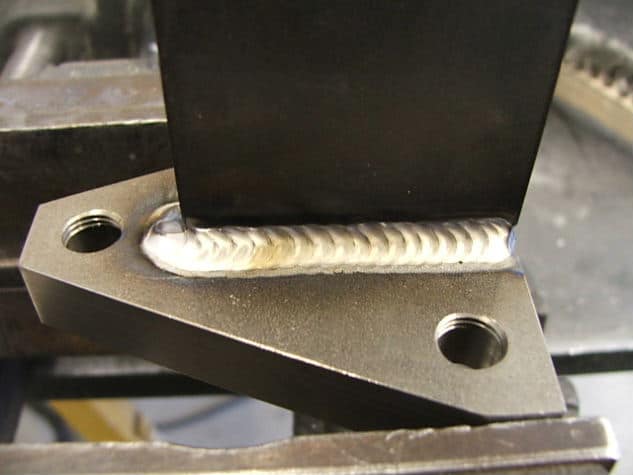
What are the benefits of TIG welding mild steel with pure Argon?
There are numerous benefits to using pure Argon for welding mild steel. They are:
1.) Stability of the arc: The most important necessity for a good weld is a stable arc. And a stable arc is the result of a few factors coming together. You need as little spatter as possible, good bead shape throughout the process and the length of the arc should stay the same as well.
2.) Aesthetic look: Argon for mild steel work best and therefore can give you the finished look that you aim for. With mild steel’s easy nature to be worked upon with pure Argon, you can get the desired look with no sweat. And that is why mild steel is used for most welding applications.
3.) Less costly: When compared to other gases Argon is cheap. And with mild steel, it can save you a lot of money. Mild steel costs very less and therefore you would not have to burn a hole in your pocket if you TIG weld mild steel with pure Argon. All that you have to focus is on the other elements like the TIG welding machine and the electrodes.
What all should be kept in mind while I set my TIG machine to weld mild steel with pure Argon?
Before you weld mild steel with pure Argon you need to know certain things that can give you the desired result. No matter how much you try, without the proper configuration of the TIG welding machine, you would not be able to get that perfect weld. Especially for an easily foldable metal, having the right settings is very necessary. A slight flaw in the settings can ruin the process for you.
However, unlike other hard metals, for mild steel, you would not have to configure everything on your TIG machine. It is therefore not that confusing for mild steel. You just have to keep in mind very few things and all of that will be discussed below:
1.) TIG/MMA: Make sure that you have settings for TIG and not MMA. MMA is for stick welding and always sets the machine for TIG welding before starting. Most of the time, a welder would not forget to do this, as it is the very first and basic thing you do for the process.
2.) AC/DC: Alternating Current or Direct Current is the current settings that you have to set for the weld. For each metal according to the capacity to take the heat, its properties, and characteristics, you ought to choose the type of current to be used.
While AC or Active Current the flow of current happens backward for DC the current flow happens in a single direction. For mild steel, you have to put it on DC. In most of the machines, there will be additional buttons near this for AC balance and AC Frequency. Here, you can ignore these as you are working with DC.
3.) 2T/4T: 2T is when you use the foot pedal. Whereas 4T needs much more control. For 2T you just have to press the gun or torch to weld and release to stop.
But, for 4T you start by pressing and releasing the trigger of the gun and weld without holding the trigger and stop by pressing and releasing the trigger. 4T is used for long weld runs. You can choose which you want based on your requirements.
If you are choosing 2T you have to decide only the welding current and ignore other settings like start current, up slope, down slope, and end current. But for 4T you have to set these after deciding the level of each.
4.) Pulse setting: This is used to control the heat so that you do not make the mistake of burning the metal with too much heat. Therefore with pulse control, you can have much more accurate welding. However, some might prefer to keep the pulse off and go for standard welding. For welds that are not critical, standard welding will do.
If you select pulse then you will have to set pulse duty and pulse frequency as well. Pulse duty helps to balance the time when the current is at its peak and its low. Usually, the TIG welders that do not allow you to decide the pulse duty comes with the default setting of 50% pulse duty.
5,) Pre flow/Post Flow: Pre flow decides the amount of gas released before the weld and post flow after the weld. The shielding gas released helps to give a stable and inert environment. Argon is one of the best gases that give an apt environment for the smooth weld.
If you are going for a practice weld or a welding work that is not critical then pre-flow can leave it on zero. While post flow will be necessary for any welding process. At times, some may use post flow as the pre flow by giving small intervals between the weld. Thus, the optimal use of the released gas can be ensured. Thereby saving gas.
See also: How to Weld and Keep Steel from Bending
Conclusion
These are just the very basic things that you have to look for while TIG welding mild steel. There are other settings like base current, up slope, down slope among others that can aid you in your welding process. For mild steel, these settings are the major ones that you need to set before you start welding.
Therefore, I say TIG welding mild steel with pure Argon is the best choice for the metal without a doubt. You can see the effect if you try for yourself!
Hope I was able to tell you what I have learned from my little experiment.
Do check my other blogs to see more about welding!


